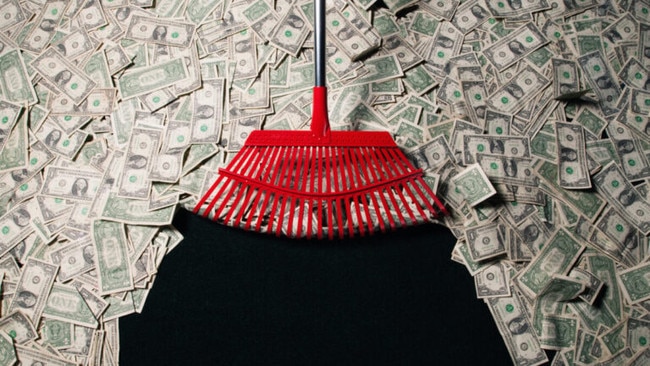WA’s nickel and lithium earnings crater as mining state continues to rake in iron ore cash
Iron ore royalties will come in almost $4 billion above the WA government’s budget in 2023-24, but it’s a different story for nickel and lithium.

Iron ore royalties will come in almost $4 billion above the WA government’s budget in 2023-24, salvaging a $3.2 billion surplus stung by blowouts in an expansion of the Perth train network, and falling lithium and nickel royalties.
Lithium’s position as the state’s third largest resources earner behind iron ore and North West Shelf oil and gas grants was short-lived, with falling spodumene prices to see the lithium sector’s contributions slide from $1.04 billion last year to $422 million in 2023-24, less than half of initial budget forecasts of $928.4 million.
For the latest mining news, sign up here for free Stockhead daily newsletters
Nickel royalties, which had been expected to bring in $173.8 million in government revenue, are instead on track to pull in $104.9 million on lower prices and consequent mine closures, as well as a royalty assistance program rolled out to try to stem job losses.
Earnings will fall even further in 2024-25 to $377.5 million for lithium and $88.2 million for nickel, though gold royalties are forecast to rise from $533.4 million to $608.9 million.
Iron ore pulled in $9.85 billion to underpin the State’s $11.2 billion mining haul, up from a budgeted $5.97 billion and 2022-23 take of $9.08 billion.
That comes down, in large part, to the conservative price forecasts used by the WA Treasury. Those have been lifted from $US66/t to $US71/t with the cost curve for iron ore miners rising in recent years.
Iron ore is expected to raise $6.33 billion in 2024-25, sliding periodically to $5.69 billion by 2027-28.
More for the miners
There was little more in the way of relief for nickel producers, who received concessions a few months ago in the form of a partial royalty holiday and the inclusion of the commodity on the Aussie Critical Minerals List.
MORE FROM STOCKHEAD: St Barbara’s golden PNG vision | Leo out of Africa at last | Germany eyes Aussie lithium
The latter powered an 80 per cent gain for Stellantis and Samsung backed nickel laterite hopeful Alliance Nickel (ASX:AXN), which was the first potential nickel development to receive major project status from the commonwealth today.
Any nickel players hoping for further relief may need to look towards the federal budget next week.
But there were a number of other commitments to the mining sector:
- $373 million will be spent on port infrastructure, including $17 million for roadworks to assist iron ore producers using the Utah Point berth in Port Hedland.
- $500 million is also being spent on areas of industrial land to prepare them for “clean energy” projects, though those include many that are white elephants thus far, such as the Mungari SIA near Kalgoorlie.
- $100m will be spent over the forward estimates to develop a common user critical minerals processing facility, something first proposed by the Association of Mining and Exploration Companies in 2021. WA’s Labor government will seek an equal commitment from Canberra. .
“This state-of-the-art facility will assist WA critical mineral developers to finalise their processing and refining methodologies and explore greater value adding opportunities,” AMEC CEO Warren Pearce said of the latter.
“This will support industry to deliver on a downstream reality for Western Australia and is a substantial investment in realising WA’s critical minerals value-adding ambitions.”
Visit Stockhead, where ASX small caps are big deals
But Pearce criticised Premier Roger Cook’s government for lifting mining tenement rental fees at a time when junior companies were struggling to raise capital from shareholders.
Additional money raised through the “services to industry” component of the tenement rental fees will be used to partly cover the costs of the critical minerals common user facility.
The Chamber of Minerals and Energy WA lauded the investment to prepare SIAs (strategic industrial areas), many of them currently ghost towns, for development by installing common infrastructure, but warned $500 million could be stretched thin across 13 industrial zones.
CEO Rebecca Tomkinson also supported the use of $125 million to open a new industrial zone at the packed Kwinana, nicknamed WA’s “Battery Alley” in a green face lift for the rugged southern suburbs community.
“The government needs to take a lead in progressing stakeholder engagement plus heritage and environmental assessments for the SIAs so they go from undeveloped land to turnkey and ready to go,” Tomkinson said.
“Competitor jurisdictions including North America have attractive incentives to move into promoted industrial areas. Similarly, Ontario’s ‘Investment Ready: Certified Site Program’ in Canada, is taking advantage of emerging critical minerals opportunities.
“While no one is expecting WA to match other jurisdictions dollar for dollar on some of their significant funding initiatives, targeted government investment and upfront co-ordination of these processes is a critical enabler of growth.
“It would mean certainty for investors that industrial land is project-ready and WA is supportive of development.” $36 million will also be spent on plans to streamline approvals.”
This content first appeared on stockhead.com.au
SUBSCRIBE
Get the latest Stockhead news delivered free to your inbox. Click here


